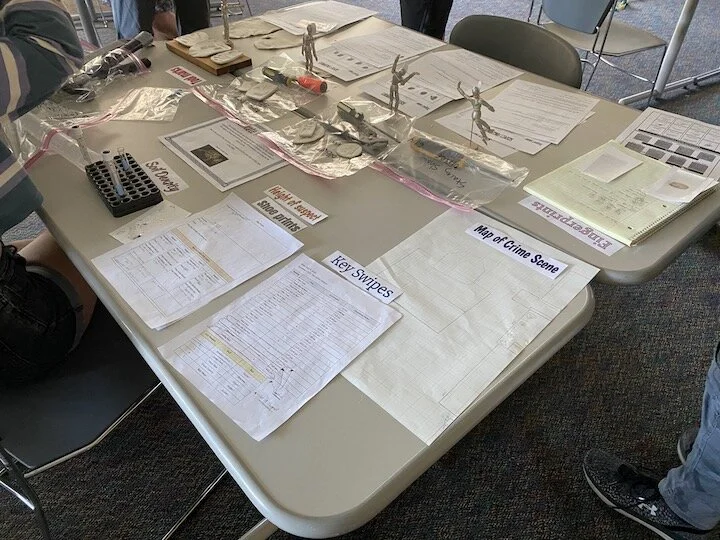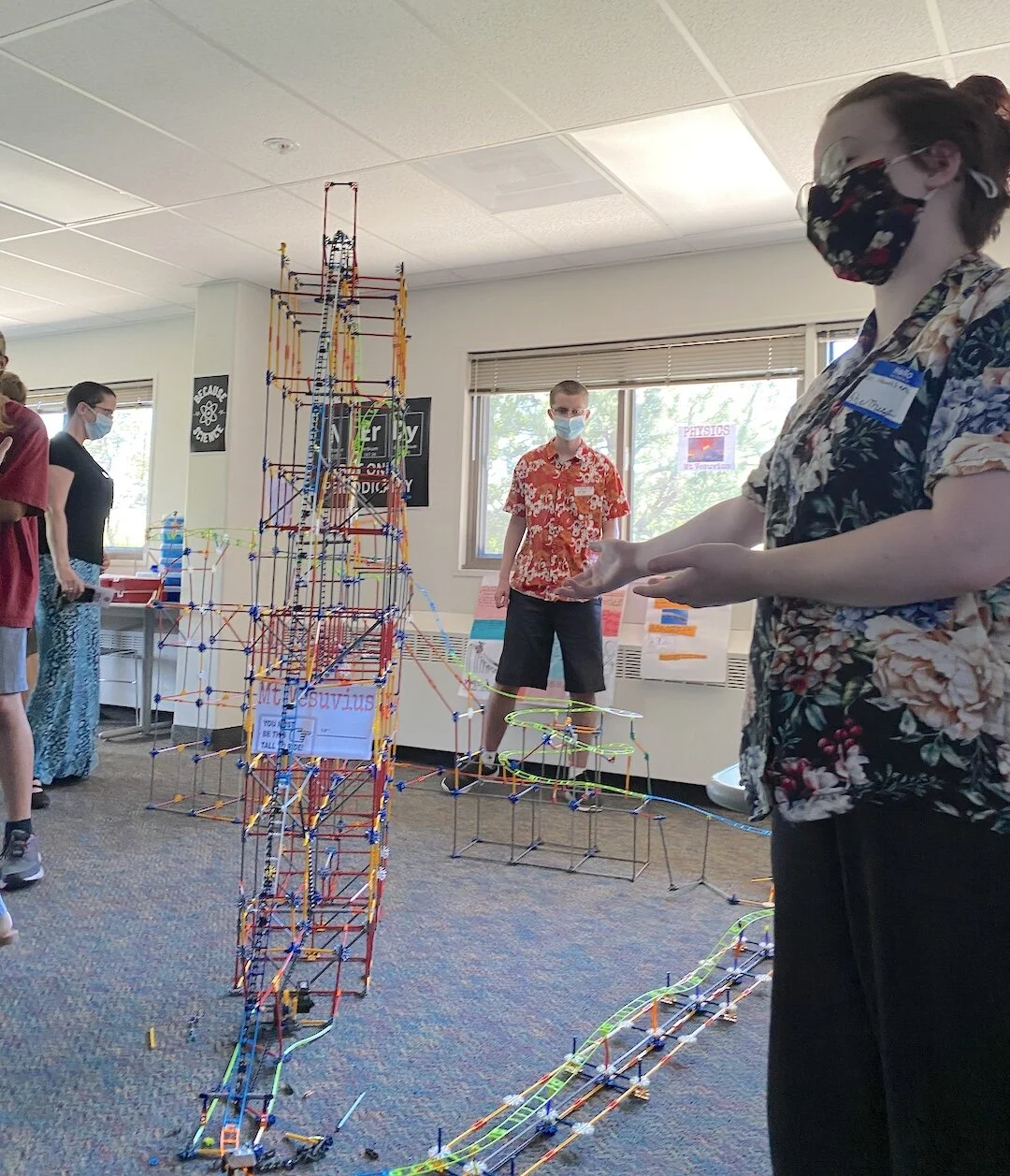Riverbend Students Drive Curriculum of Roller Coasters, Crime Scenes & Houseless
Riverbend Junior Saige Thompson shows a soil density test used to identify the mud from a teacher’s shoe that was left at the scene of a crime. Learning the Science of Forensics turned into quite a little caper.
By Tom Peterson
There are some simple recipes at Riverbend Community School on the Columbia Gorge Community College campus in The Dalles.
Want to learn about physics? Build a roller coaster.
Want to understand macro photography - get in your backyard with a wide-angle lens.
Want to solve a crime? Break out your best forensic science skills and start taking fingerprints and gathering evidence.
Want to help students who are houseless and couch-surfing in our community? Do an in-depth dive into public policy that can find cash and people to help change the situation.
That is how it went on Wednesday afternoon, June 23, as students showcased the skills and knowledge they had acquired at the school at their Spring Exhibition of Learning.
Case of the Endangered Frog
In the scenario in Forensics Class, Teacher Jocelyn Paris had an endangered frog in her keeping and it was worth $200,000. It was kept at the top of a cabinet in her room.
Well, guess what? It was stolen.
And it was the student’s job to solve the crime.
Using forensic science, they were able to deduce that a pry bar had been used to enter the room and then there was dirt on a chair from the suspect's shoe. The chair was likely used to reach the frog.
Students, after checking key card use into the room, deduced that there were two persons of interest in the crime. Administrator Stacey Shaw and Teacher Kieran Connolly.
“Connolly knew it was an expensive frog, but there was not enough physical evidence to make an arrest,” said student Bereket Mahn.
Students questioned Connolly about the shoes he was wearing and he submitted them for inspection. Students found that his shoes were carrying dirt so they compared it to the dirt found on the chair that was presumably used to reach the frog.
The Table of Evidence
Using a soil density test, they found the dirt did match that of what was found on the chair.
But it was not enough.
And Shaw lawyered up when students questioned her about the incident.
She proved to be a bit of a hostile interview and refused to submit her shoes for comparison to shoe prints that were taken at the scene.
Students pointed out that Connolly showed them how to use a crow bar and Shaw stated she had a lot of debt to pay off.
Fingerprints from both were found at the scene - Students had to find 11 identifying ridge characteristics to make a match.
And then there was this. Shaw switched key cards to enter classrooms with teacher Josephine Colburn during the week.
She refused to say why.
Students said they submitted DNA samples, and hoped to have a final answer this week. Shaw noted she was a flight risk as her vacation was starting shortly.
Deep Dive
Jack Waller, Theron Bowman, Blake Darr, Ashlyn Jones and Cameron Sorenson discuss actionable polices for helping houseless students.
Josephine Colburn’s 10th grade social studies class took a hard look at public policy and chose to research houselessness for students.
Sophomores Jack Waller, Theron Bowman, Ashlyn Jones and Blake Darr took us through their research and thought processes.
They studied state and federal policy through interviewing local leaders, such as District 21 Interim Superintendent Theresa Peters.
They looked for ways to get students free lunch, backpacks, clothing, emergency shelter. They spoke with The Dalles City Councilor Darcy Long-Curtis who spearheaded housing for the houseless in The Dalles this winter and has been a long term advocate for those living on the street and needing assistance.
They found out that a study in 2017 showed 117 students were houseless at that point in time.
They uncovered the McKinney-Vento Act, which requires through federal law that local state and federal agencies are required to respond to students who are left without a shelter so that they can continue their education.
Members of the audience asked the students to present the information to the District 21 School Board to inform them about their findings and their aspirations to help students without housing. They also pointed out that the North Wasco County School District Education Foundation has ramped up fundraising in the last several years and should also be made aware of their findings.
Want to learn about physics - better build a roller coaster.
The Physics of a Roller Coaster
Students also displayed their knowledge of physics. And they proved their understanding via their choice to build a roller coaster, said science teacher Jocelyn Paris.
Students took their parents through concepts of velocity, g-forces, kinetic energy, potential energy, friction, acceleration, momentum and power to name a few.
They also talked about upside-down loops in the track, noting a colloidal loop was the best for human passengers. The smooth tear-drop design did a lot less damage to the human body.
Ashlyn Jones said they had to build their roller coaster on a scale that translated to 288 feet high so that it would have enough kinetic energy in a 184 elevation drop to keep the rollercoaster moving to its final destination - the chain pulling it back to the top.
However, the car stopped midway through the model.
“Why is that,” Paris asked.
“Friction,” said Cameron Sorenson. “It’s too sharp of a corner, and it pinched the wheels.”
Riverbend Community School serves students in the North Wasco County School District. It is a charter school with a year-round curriculum. The school focuses on design thinking and critical problem solving. Hands-on and real-world projects are created by students in all classes. Math and science classes utilize a building and design focus. Humanities classes engage in critical problem solving for real-world problems. Learn more by clicking here.




